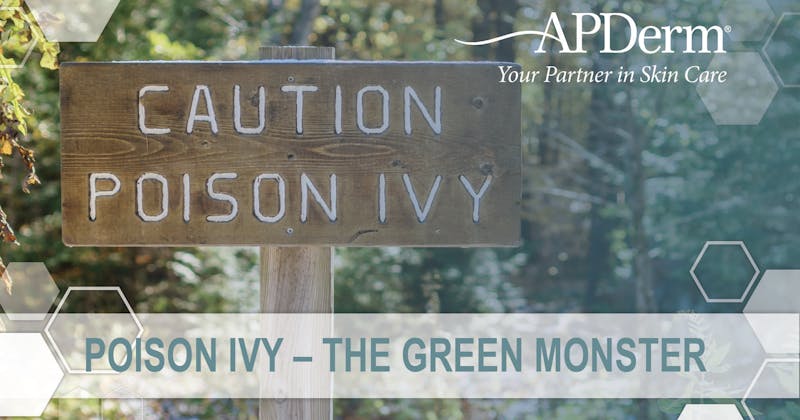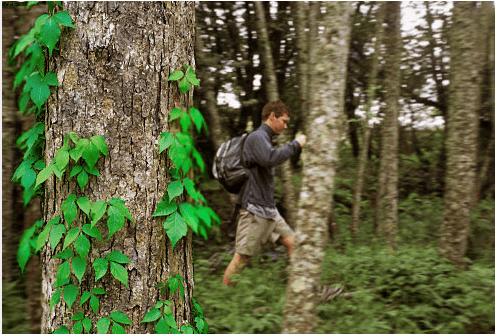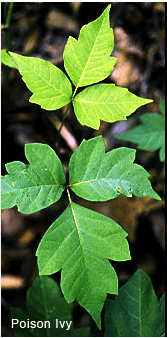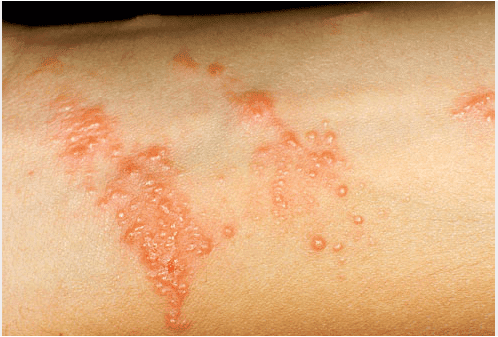Your Family Deserves the Best Care Book an Appointment
Your skin health matters, so don’t delay. Our clinicians look forward to treating you and your family at one of our local New England practices.
Find Your Nearest APDerm Center
While we are home during this COVID-19 pandemic, we are getting outside for a variety of activities as best we can while practicing social distancing. Me, well, I am an avid gardener, and one of my favorite times is early spring. Sedum plants erupt from the earth. Bleeding heart plants transform overnight from tiny shoots to foot high plants like a time-lapse photograph. The leaves are starting to grow on the trees, and the lawn is a bright green. But my least favorite thing about spring is Poison Ivy. It is the Green Monster of Spring and Summer.


What is Poison Ivy
Despite its name, Poison Ivy is not poisonous, but it does have a sticky, long-lasting oil called urushiol that causes an itchy, blistering rash after it touches your skin. Even slight contact, like brushing up against the leaves, can leave the oil behind. Poison ivy grows as a vine or a shrub, and it grows everywhere throughout North America.
The plant itself is easy to spot with its distinctive three leaves, one on each side and one in the center, with shiny, smooth, and slightly notched edges. It can be found on roadsides, edges of ball fields, in bark mulch, and in the woods. It can also get on the fur of pets after a walk.
The irritating oil, urushiol, once in contact with skin, causes contact dermatitis within twenty-four to seventy-two hours, depending on where the plant came in contact. The dermatitis usually peaks in a week but can last as long as three weeks. Dermatitis produces red spots often in a line or a patch. It can get quite ugly, causing blisters that are intensely itchy and uncomfortable.

What Do You Do, IF You Come in Contact with Poison Ivy?
To avoid getting poison ivy contact dermatitis, it is important to know what the plant looks like and avoid coming in contact with the leaves or anyone else who may have come in contact with it – like your pet. If you do get exposed to poison ivy, you need to wash the area with soap and water as soon as possible. Many gardeners swear by Dawn dishwashing liquid while others like over the counter products like Tecnu, which break down the urushiol oil to help prevent it from irritating the skin. If you do not have soap and water, rubbing alcohol or wipes can remove it. Keep the affected area cool, dry, and clean.
If you do develop the poison ivy contact dermatitis or rash, there are several things that can be done to help with the blisters that develop and cause the itch and pain. Cold wet compresses are great as well as baths using baking soda or colloidal oatmeal bath products by Aveeno. Calamine lotion, topical Benadryl lotion as well as oral Benadryl can help with the itch.
Topical steroid creams can also be prescribed, and diagnosis and prescription of these medications can easily be made through a teledermatology appointment. Click here to schedule an appointment.
So, get outside and get some sun, but be careful out there. Whatever you do, whether it is gardening, lawn warrior duty, dog walking, hiking, or ball playing – all while social distancing – your care providers at APDerm are here for you through teledermatology.
Remember “Leave of 3 – Let them be”. Happy planting, and don’t forget your hat and sunscreen (Elta Clear 46 is my favorite).
We are here to help you with all your dermatology needs during this crisis and after.